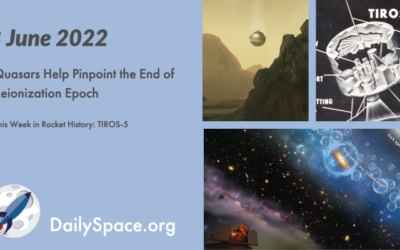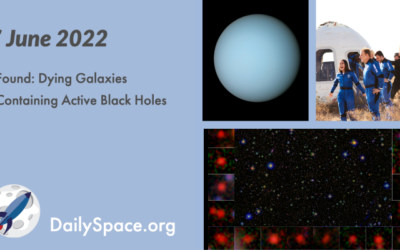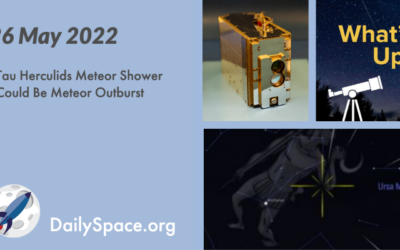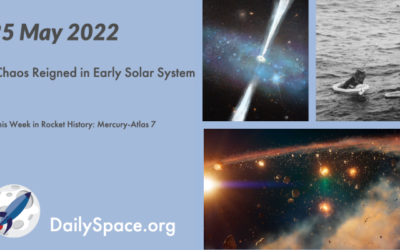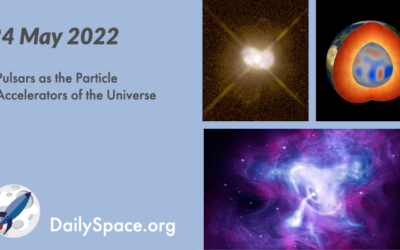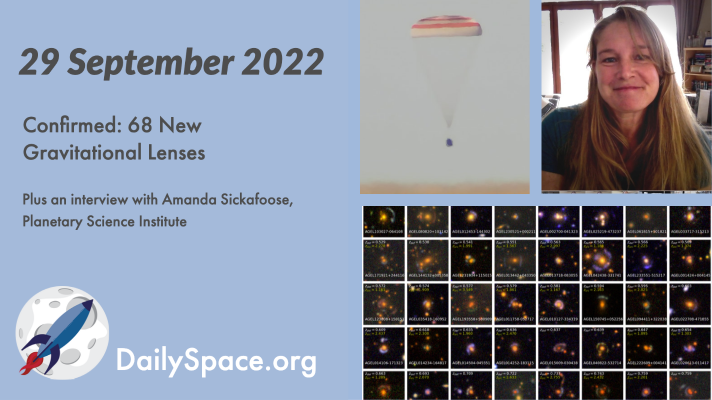
Confirmed: 68 New Gravitational Lenses
Using a machine learning algorithm, scientists have confirmed 68 out of 77 potential gravitational lens candidates from a subset of over 5,000 possibilities. Plus, generation one stars, astronauts coming home, dating craters on Earth, lunar glass, and an interview with Amanda Sickafoose regarding the DART mission.
Catch us on NowMedia TV
Saturday 11pm Central / midnight Eastern
Sunday 10pm Central / 11pm Eastern
Watch live on these stations: Houston 21.10, Atlanta 22.10
or tune-in on Apple TV, Roku, YouTube Live, or Amazon Prime
Quasars Help Pinpoint the End of Reionization Epoch
Using the radiation signatures of quasars, scientists have determined when the era of reionization ended in our universe – about 1.1 billion years after the Big Bang. Plus, an update on NASA’s MAVEN spacecraft, new Hubble and Chandra images, and This Week in Rocket History is the TIROS-5 weather satellite.
Found: Dying Galaxies Containing Active Black Holes
Astronomers combined observations of far distant galaxies exhibiting no signs of star formation and found active supermassive black holes that may have contributed to the evolution of their parent galaxies. Plus, rocket launches, detecting earthquakes, and why Uranus and Neptune are different shades of blue.
A Trio of Mars Papers Provides Two Explanations to Different Questions
Today, we take a look at three recent papers attempting to explain various phenomena on Mars. One uncovers the cause of discrete aurorae. Another explains the martian haze. And a third actually ends up with more questions than answers. Plus, Boeing’s OFT-2 returns to Earth, ESA’s Solar Orbiter makes its closest approach, and Dr. Pamela reviews the new graphic novel “Galaxy: The Prettiest Star” by Jadzia Axelrod.
Tau Herculids Meteor Shower Could Be Meteor Outburst
Due to the gravitational pull of Jupiter on the fragments and dust of comet 73P/Schwassmann-Wachmann, Earth’s orbit may be moving through a dense portion of the comet’s trail on May 31. This alignment could result in an unusually spectacular meteor outburst, and we’ll interview astronomer Pierre Martin about this possible event. Plus, a SpaceX launch that wasn’t Starlink, a new solar sail, and JWST.
Chaos Reigned in Early Solar System
Researchers using radioactive decay analysis have recreated the early history of some asteroids in our solar system, revealing a more chaotic phase than previously thought. Plus, a near-Earth asteroid, a trove of black holes, and this week in rocket history, we look back at Mercury-Atlas 7.
Pulsars as the Particle Accelerators of the Universe
Fast, strong magnetic winds caused by quickly rotating pulsars may be accelerating particles like electrons to extremely high-energy states and creating gamma-ray photons in their wake. Plus, missions close to home, large and distant objects, some pretty Hubble photos, and laser simulations of fast radio bursts.


 We record most shows live, on Twitch. Follow us today to get alerts when we go live.
We record most shows live, on Twitch. Follow us today to get alerts when we go live.

